32 benefits of training your dog
Curious about the benefits of training your dog? We've got you covered.

When you use positive reinforcement and relationship-based training, there are numerous benefits of training your dog that range from an increased bond and enhanced safety to enjoying outings together and excelling at dog sports.
While some training methods involve punishment and intimidation and can actively harm your pup and damage your relationship, our guide is focused on using ethical, fun, gentle, and rewarding methods that you and your pup will benefit from. Make sure to stock up on some of the best dog toys and the best dog treats so you and your dog can have a blast training together.
Read on to learn more!
32 benefits of training your dog
1. Teaches and improves focus

One of the benefits of training your dog is their improved focus. You can incrementally build this skill with a cue like "watch me" which asks your dog to keep their focus on you for a short amount of time. You can shape this cue by holding a treat in front of your face and saying "Watch me" when your pup shifts its attention to the treat.
Eventually, you can phase out holding the treat and simply give the verbal cue and then reward your pup with a treat or toy when they focus on you. Initially, for especially distractable dogs, you'll want to reward a short glance in your direction and slowly build up duration as they succeed.
2. Provides you with a new skill
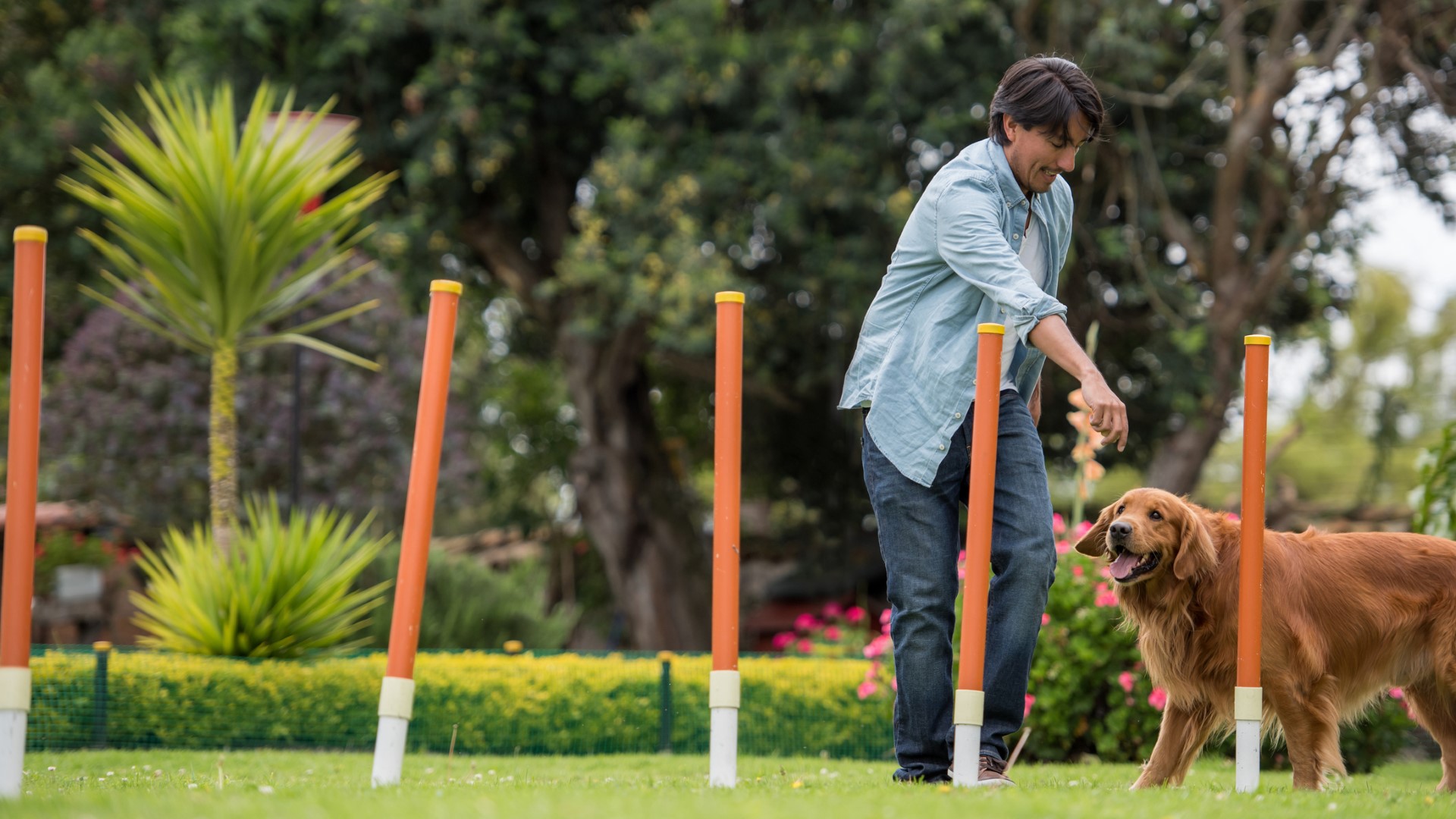
Learning about positive reinforcement for dogs and relationship-based training is an incredibly helpful skill to acquire. As you learn how to use this kind of training method, you'll learn about timing, marking and rewarding behaviors, shaping cues, ethical training, providing choice in learning, and much more. Acquiring this skill set can help you further connect with your pup and learn how to teach them in a kind and supportive way.
3. Helps to build trust
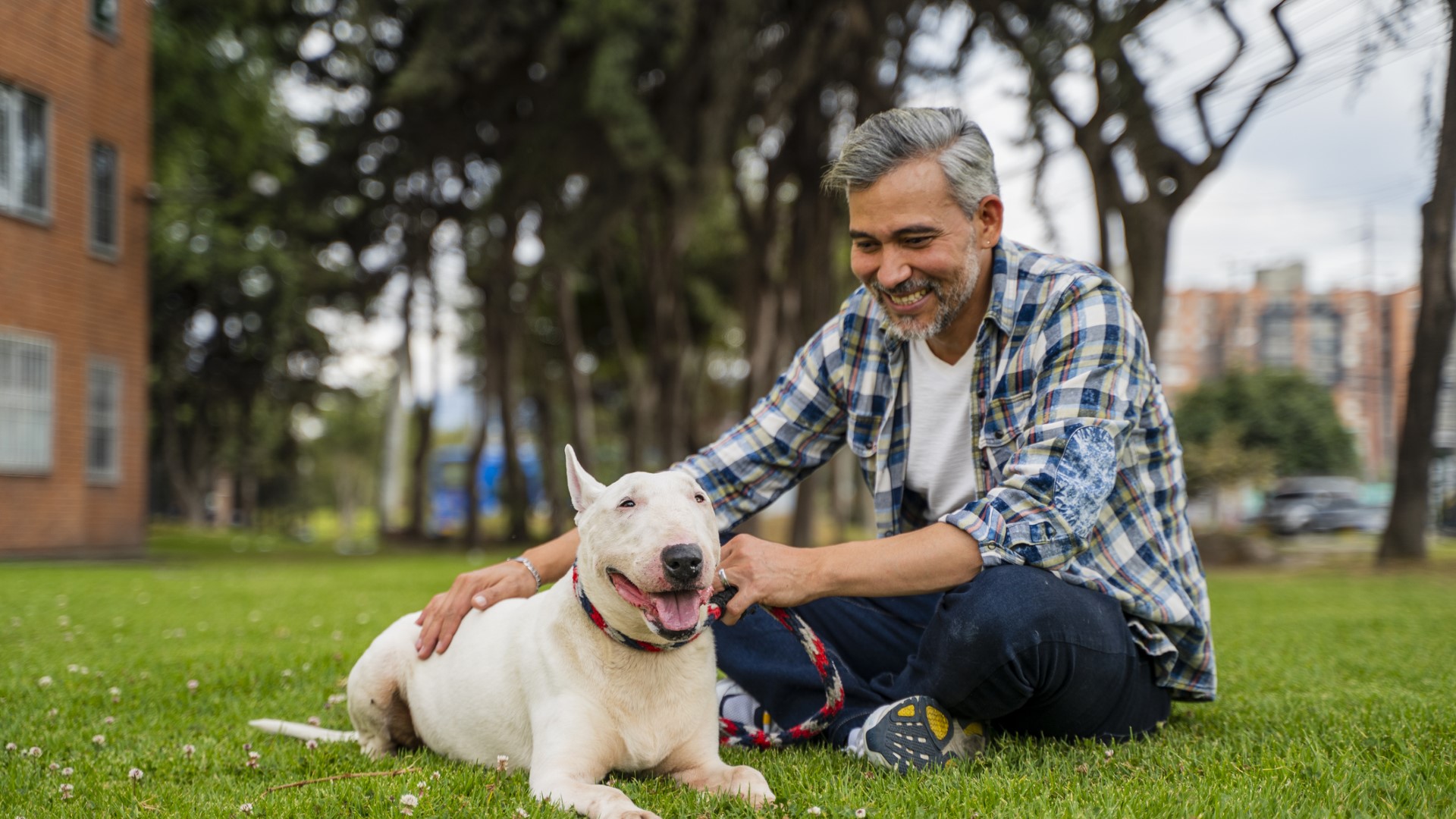
When you use ethical and kind training methods, you'll not only teach your pup new cues, but you can also build trust. For rescued dogs, under-socialized pups, or dogs who have experienced trauma, positive reinforcement training can help them associate good things (play, toys, treats) with people.
Get the best advice, tips and top tech for your beloved Pets
This trust is best built when pet parents are especially careful to not use rewards to lure the dog into doing something their uncomfortable with (like approaching a stranger).
4. Improves recall

Positive reinforcement and relationship-based training can greatly improve your pup's recall. By focusing on forming a strong relationship and associating yourself with rewards, games, and choice, your dog is much more likely to choose to consistently come to you when called.
You can start teaching recall in a low-distraction space and slowly build up the distractions present in the environment as your pup's reliability and enthusiasm to return to you increases.
5. Prevents and treats resource guarding
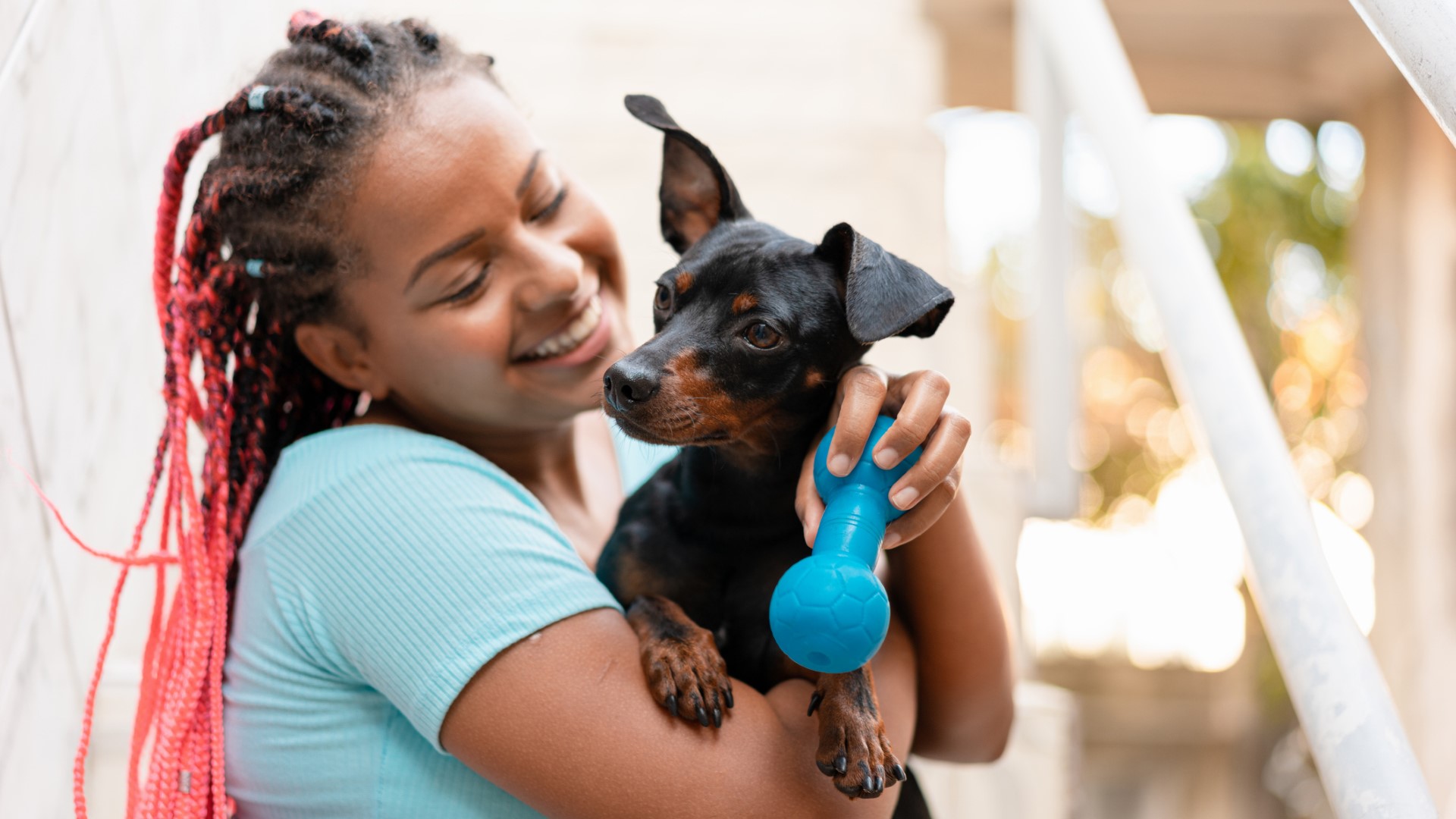
Resource guarding in dogs can develop for a number of reasons, but using ethical training methods can prevent or treat guarding behaviors. If you adopt a young puppy, you can immediately start playing trading games to encourage sharing.
By consistently offering trades of equally or more valuable items to your pup when they have a toy or chew, rather than simply taking items away, you are showing that you're a safe person for your pup to give their toys, bones, sticks, and treats.
6. Makes feeding time easier

If your doggo is particularly exuberant about their meals, training can help feeding time be a calmer event. Teaching cues like "wait" and "sit" can help teach your dog to sit politely while you put the bowl down rather than rambunctiously jump on you.
It's important to remember to keep this training ethical by not taking your dog's food away (even momentarily) as a punishment for becoming overexcited. Instead, focus on teaching these skills outside of their feeding time. Build up their reliability by starting out by placing one piece of kibble in their food bowl while asking them to wait a couple of seconds before getting their treat. Then incrementally build to asking for a sit and wait as you place their meals down.
7. Provides routine

Establishing a daily routine can help some anxious dogs develop a comforting sense of predictability. Daily training sessions can contribute to providing consistency and structured, but enjoyable activities to participate in. Working in short, fun, and engaging training sessions into your pup's routine can help reduce anxiety and create positive experiences for them to look forward to.
8. Makes vet visits easier

Vet visits can be stressful and even traumatizing for many dogs. Thankfully, you can use training to help your dog feel safer and more comfortable during vet visits. Much of this training involves the use of classical conditioning and systematic desensitization which creates positive associations while gradually exposing your pup to vet tools, the vet's office, etc.
To succeed in this process, it's important that your dog remains under their threshold of what they can handle. This means that as you pair treats with the introduction of a stethoscope against their fur, for example, they shouldn't feel acutely afraid or uncomfortable. If that's the case, you'll need to take some steps back, like bringing out the stethoscope and giving lots of treats for sniffing or looking at it but not putting it against their fur until they're comfortable.
9. Provides mental enrichment

Training can be an excellent source of mental enrichment, which is crucial for the well-being of your pup. You can incorporate mental enrichment within your training sessions with the use of puzzle toys and problem-solving games. For instance, you can build up your dog's cognitive skills by teaching them to pick which cup out of three choices has a treat under it or by introducing "find it" games with toys.
10. Improves communication

Positive reinforcement and relationship-based training can improve communication between dogs and pet parents in a number of ways. These training methods encourage problem-solving, build trust, prioritize listening and responding to the dog's comfort and needs, enhance body language-reading skills, set up clear and achievable cues, encourage cooperation, and incorporate choice and feedback from the pup.
11. Makes travel smoother

There's a plethora of cues and skills you can teach your pup to make traveling with a dog a much smoother and safer process. These skills include loading up and safely exiting the vehicle when prompted, settling in a designated space in the car, walking on a loose leash during potty breaks, heeling while navigating crowds and tight spaces, teaching your puppy "leave it", and developing a reliable recall.
If your pup is anxious on the road, you can also use classical conditioning and systematic desensitization to help them feel more comfortable. Start with helping them feel comfy around the outside of the vehicle, then sit in a parked car in your driveway for a short duration, and incrementally build to small outings before going on full-on trips. Your vet may also be able to help with anti-anxiety and anti-nausea meds if your pup gets car sick.
12. Strengthens your bond
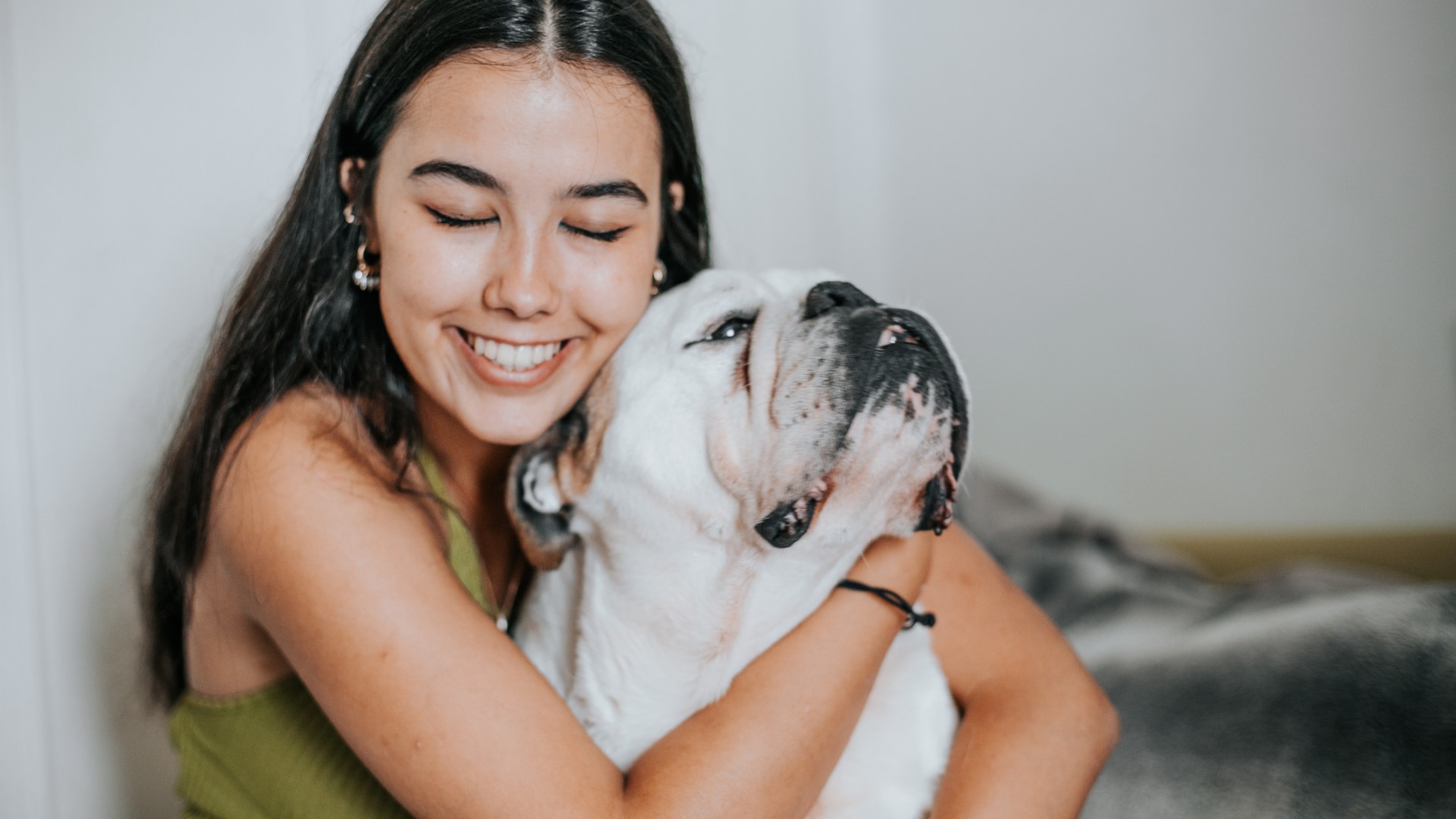
When training is rewarding, fun, and not coercive, it can help improve your relationship with your dog. On the flip side, according to the Australian Veterinary Association, training that is coercive or uses punishment, fear, or intimidation can damage your relationship and lead to a host of other negative outcomes, such as fear aggression, stress, and suppression of normal communication for your pup.
If you want to build an awesome bond with your pup it's best to create training sessions that they actively want to engage in and that celebrate their natural abilities, such as scent games.
13. Improves rest

A fun and engaging training session can provide physical exercise, social bonding, and mental enrichment for your dog. Having these crucial needs met means your pup is more likely to have improved rest, restorative sleep, and reduced restless behaviors.
It's important to note that too much training can overstimulate your dog which can make it harder for them to relax, so make sure your dog isn't struggling to calm down after training. If they are, you may need to shorten your sessions and make they are fun and engaging for your pup.
14. Improves leash walking

Pulling on the leash can make a walk acutely un-enjoyable for pet parents. The good news is that you can teach your canine buddy to walk on a loose leash using positive reinforcement. Starting in a low-distraction environment, you can practice rewarding your pup with high-value treats every few steps for walking either next to you or simply not at the end of the leash. Using a leash that is at least 12 feet long can help allow your dog more room to sniff and explore their environment without pulling.
By combining loose leash training with focusing on letting your dog sniff, explore, and choose walking paths when possible, you can achieve a walk that is enjoyable for everyone.
15. Teaches polite greetings

Training can help your pup's greetings become less rambunctious and prone to knocking someone over. Teaching polite greetings involves training your dog to perform an alternative behavior to jumping up on someone or bowling into their legs. This may look like teaching your dog to grab a toy to prance around with when you come home or to keep all four paws on the floor in order to get pets.
16. Reduces destructive behaviors

Destructive behavior can sometimes arise in dogs without enough mental stimulation, exercise, and engagement with their pet parents. Fun, varied, and rewarding training sessions can benefit your dog's mental and physical health, reducing the chances of them chewing on couch pillows out of frustration or boredom.
17. Provides a rewarding experience

Positive reinforcement and relationship-based training can be incredibly rewarding for both pet parents and their canine buddies. If you're looking to increase the amount of fun activities to engage in with your pup, try adding in some daily training sessions.
You can teach basic cues and recall, work on scent trailing games, or start introducing puzzle games. As long as you and your pup are having fun and learning together, you're on track!
18. Assists with socialization

According to the American Veterinary Medical Association, the early socialization window exists in puppies from three to 14 weeks of age. During this time, their brains are primed to be curious and learn about their environment. Providing a gentle, thorough, and supportive socialization experience for your puppy is crucial to helping them develop into well-rounded and confident adults. Ethical training can greatly assist with this process.
For example, if you have taught your puppy how to walk calmly on a leash, you'll have an easier time introducing them to other friendly dogs on your daily walks or park visits.
19. Builds a foundation for dog sports

Whether you're interested in agility, dock diving, rally trials, or disc competitions, your pup will need to master basic cues such as "sit", "wait", "watch me", and "down", have a rock-solid recall, and be eager to engage in training sessions in order to successfully pursue most competitive dog sports.
Once you have the foundations down that are taught in most puppy or life skills dog classes, you can move on to introducing the intricacies of your chosen sport. It's important to pick an activity that your dog is clearly intrinsically motivated to participate in. If you want to do dock diving together, your pup should have an absolute love for swimming and leaping into the water, and thoroughly enjoy games of fetch.
20. Makes public outings easier

Public outings with your dog can quickly become stressful if your pup doesn't have foundational training for calmly walking on a leash, sitting next to you when asked, having some degree of impulse control or a solid "leave it" cue, and being able to safely navigate crowded environments.
If you want your canine BFF to be able to accompany you on public outings, it's important to build foundational skills first in a low-distraction and comfortable environment. Your pup should also be very well-socialized and not feel consistently anxious in public. It's important to understand that teaching cues like "sit" and "watch me" can be extremely valuable, but they won't resolve underlying fear. To address fear, anxiety, and defensive behaviors, we recommend enlisting the help of a relationship-based behaviorist/trainer or fear-free veterinary behaviorist.
21. Increases confidence

Training that your dog enjoys participating in can increase their confidence, especially if you incorporate physical and cognitive skills such as agility and scent games. By rewarding your dog's successes and setting up training sessions so they can easily succeed, you can enhance your pup's mental health.
Additionally, by using positive reinforcement training in a variety of environments, you can help your dog to associate new places with rewarding experiences, thus boosting their self-assurance in a variety of environments.
22. Provides physical exercise

Training that incorporates fun exercise is a great way to support your dog's health and needs for physical enrichment. Recall games, agility exercises, and play-based training are wonderful ways to ensure your dog stays physically fit while learning new skills and cues. Of course, you'll want to make sure your dog is actively enjoying the exercise and is voluntarily participating.
23. Increases safety

Training can vastly increase your dog's safety as they navigate our often chaotic human-dominated world. We can't explain to our pups the dangers of a busy street or of getting lost if they follow their nose multiple blocks away, but we can teach skills that will increase their safety.
Building a rock-solid recall is a great way to ensure your pup stays safe in off-leash areas. Teaching "wait" and to walk right next to you when crossing a street is vitally important. A "leave it" and "drop it" cue can prevent your dog from eating something potentially toxic they may find on a walk. Training a "let's go!" with a quick u-turn can help you quickly leave an unsafe situation, such as if an intro to another pup is turning tense or a full-blown scrap has broken out at a dog park.
24. Makes grooming easier

Many dogs can feel uncomfortable, anxious, or acutely afraid during grooming tasks. Focusing on building cooperative care routines in which your dog voluntarily participates in their care is vital to supporting your relationship, building trust, and ensuring smooth and safe grooming tasks.
The key to developing cooperative care is to respect your dog's decision to opt out whenever possible and come back to the task later, use classical conditioning and systematic desensitization, move incrementally at your dog's comfort level, use high-value treats, and ensure your dog is thoroughly comfortable with the sight, smell, and feel of a grooming tool before working on actually using it.
25. House training

Positive reinforcement training can help you quickly teach your puppy house training skills without using punishment or confusing your little buddy. Make sure to take young puppies out at least every two hours and after they drink water, and thoroughly reward them with affection, treats, and play after they use the bathroom outside or use their puppy pads.
It's important to not scold them if they have an accident indoors as this can only serve to frighten and confuse your puppy, damage your relationship, and can lead to your puppy hiding where they go to the bathroom.
26. Improves patience

Positive reinforcement training can improve your pup's patience, especially when you incrementally build the duration of a skill. For example, if you're teaching a "wait" cue, by slowly increasing the amount of time you ask them to wait before they receive their reward, you can increase your dog's patience and frustration tolerance without sending them into an anxious or over-threshold state.
27. Creates a peaceful multi-dog household

Multi-dog households can quickly become overwhelming and exacerbating if the pups haven't been taught basic skills and house manners. You can use rewards-based training to prevent resource guarding among the household dogs, establish a calm routine for meal time, teach patience and polite greetings, and set up play-based, rewarding training sessions for each dog and as a group.
28. Teaches safe interactions with kids
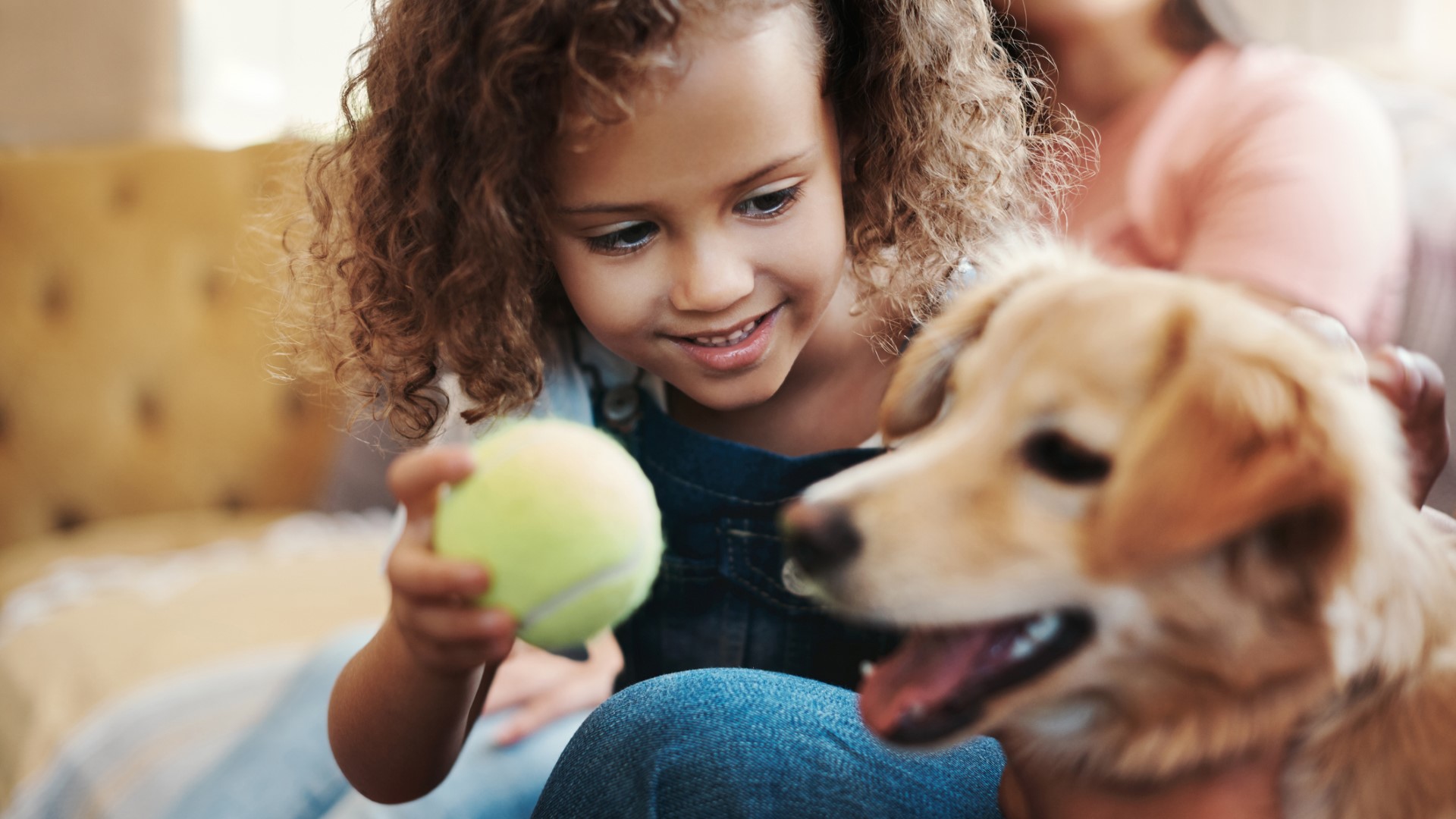
To help ensure safe interactions between young kids and dogs, it's important to teach your kiddo how to safely interact with and respect the boundaries of the pup, and to teach your pup how to gently interact with the child. Helpful cues include "four on the floor", "sit", "down", "stay", "off", "leave it", and "settle" or "go to bed/mat". Thorough socialization can also help your dog feel comfortable around the sometimes rambunctious energy of children.
29. Improves retrieving skills

If you'd like your pup's retrieving skills to be more consistent, you can develop them with positive reinforcement training. Trading the toy or stick they've retrieved for another toy or treat will encourage your pup to willingly trade their items and bring them back to you.
You can also play tug-o-war and incorporate "drop it" to ask your pup to let go of the toy periodically throughout the game. The key to developing a solid retrieval skill is to make bringing items to you fun and rewarding for your pup.
30. Makes play dates more enjoyable

If your dog's selective listening kicks into high gear during play dates, you can use training to improve their responsiveness. One way to build this is to develop their recall while they're playing. You can ask for the recall, reward them with a treat when they come to you, and then enthusiastically encourage them to go back to playing with their dog buddies. Using this skill periodically during play dates will show your pup that coming back to you when you call doesn't mean the fun is over.
31. Makes hosting guests easier

A huge benefit of training is that it can make hosting guests with your pup a much smoother and more enjoyable time. You can teach polite greetings to ensure your guests aren't bowled over and "got to bed/mat" to give your pup a place to settle. Make sure to invest in one of the best dog beds to ensure your dog feels comfy and content while guests are over.
You'll also want to reward them with treats for calm and friendly behavior throughout the gathering. if your pup is anxious or fearful around house guests, it's best to enlist the help of a relationship-based specialist to help your pup feel safer around new people in their home.
32. Promotes regulation

Teaching your pup regulation skills is super important in preventing accidents, increasing safety, promoting cooperative play styles, enhancing focus, and improving impulse control around various stimuli.
There are a number of training games you can use to improve their energy regulation. Mat training, green light/red light games, playing tug of war with your puppy with rewarded "down" and "drop it" breaks in between, dog feeding puzzles, recall, and send-off to play, scent work, and games that intermix high-energy and low-energy activities can all improve energy regulation.
Cammi is a freelance writer with over 5 years of experience specializing in creating accessible and engaging pet, wildlife, and mycology content. She’s passionate about sharing accurate, ethical, and animal welfare-centered writing that fosters understanding, curiosity, and compassion for our pets and the natural world. She lives off-grid in a self-built cabin with a rambunctious pack of rescue and foster dogs. In her spare time, Cammi enjoys volunteering with animal shelters, foraging for mushrooms, playing viola and guitar, and traveling.
